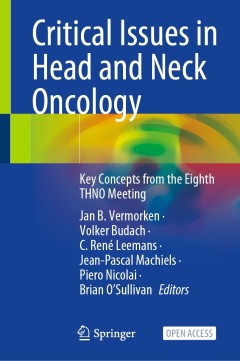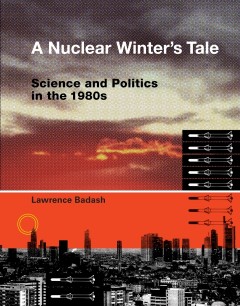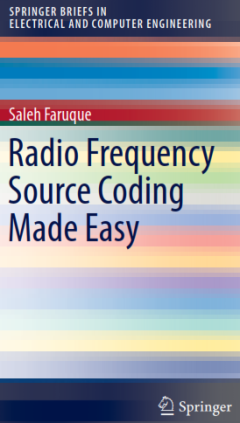Filter by

Forest Radioecology in Fukushima
This Fact Sheet will provide general information helpful to understand the Fukushima accident and forest through 15 Q&As.
- Edition
- -
- ISBN/ISSN
- 9789811694042
- Collation
- XXIV, 160
- Series Title
- -
- Call Number
- -

Anal Incontinence : Clinical Management and Surgical Techniques
This open access book describes the latest advances in the anal incontinence diagnostic and therapeutic processes. Anal incontinence is a devastating condition heavily impacting on the patients’ lives. Those suffering from this disorder are generally very embarrassed and reluctant to undergo an appropriate clinical evaluation, thus becoming more isolated and worsening the quality of their l…
- Edition
- 1
- ISBN/ISSN
- 978-3-031-08392-1
- Collation
- XI, 211
- Series Title
- Updates in Surgery
- Call Number
- 610 ANA

Critical Issues in Head and Neck Oncology
With a wealth of exciting data emerging in this rapidly evolving field this book will review the state-of-the-art knowledge with emphasis on multidisciplinary decision and management of head and neck cancer. The book provides significant detail on a wide range of topics including: the role of new targets for treatment, immunotherapy, resistance mechanisms, standardizing molecular profiling prog…
- Edition
- 1
- ISBN/ISSN
- 9783031231759
- Collation
- -
- Series Title
- -
- Call Number
- -

IAEA Atlas of Cardiac PET/CT
This open access book presents a wide portfolio of examples of positron emission tomography coupled with computer tomography (PET/CT) studies in various cardiac conditions in order to provide a rationale for the implementation of this technology in an array of clinical conditions. Cardiovascular diseases are a major contributor to premature morbidity and mortality worldwide. Low- and middle…
- Edition
- 1
- ISBN/ISSN
- -
- Collation
- -
- Series Title
- -
- Call Number
- IX, 207

Spinal Instability
This easy-to-consult guide describes new minimally invasive procedures for the treatment of spinal instability that are accompanied by fewer complications and side-effects, reduce the risks of anesthesia, and lower costs. Clear accounts of a range of CT, X-ray, and MRI guided techniques are provided, including radiofrequency ablation in facet syndrome, cervical spine fusion, posterior and anter…
- Edition
- -
- ISBN/ISSN
- 978-3-319-12901-3
- Collation
- -
- Series Title
- -
- Call Number
- -

Mastering Endo-Laparoscopic and Thoracoscopic Surgery: ELSA Manual
The book focuses mainly on the surgical technique, OR setup, equipments and devices necessary in minimally invasive surgery (MIS). It serves as a compendium of endolaparoscopic surgical procedures. It is an official publication of the Endoscopic and Laparoscopic Surgeons of Asia (ELSA). The book includes various sections covering basic skills set, devices, equipments, OR setup, procedures …
- Edition
- 1
- ISBN/ISSN
- 978-981-19-3755-2
- Collation
- -
- Series Title
- -
- Call Number
- XXVI, 578

A Practical Guide for Pediatric Nuclear Medicine
This open access book will provide a foundation for the understanding of, and knowledge for a successful routine use of diagnostic Nuclear Medicine procedures in children through expertise and cases provided by representative busy pediatric nuclear medicine facilities. The book highlights important aspects of nuclear medicine in children and the differences between adult and pediatric practice …
- Edition
- -
- ISBN/ISSN
- 978-3-662-67630-1
- Collation
- XVIII, 231
- Series Title
- -
- Call Number
- -

A Nuclear Winter's Tale: Science and Politics in the 1980s
Lawrence Badash traces the rise & fall of the concept of 'nuclear winter', played out in research activity, public relations & Reagan-era politics.OCLC-licensed vendor bibliographic record.
- Edition
- -
- ISBN/ISSN
- 9780262258531
- Collation
- 1 online resource (xiii, 403 pages).
- Series Title
- -
- Call Number
- -

Radio Frequency Source Coding Made Easy
Buku ini memperkenalkan Radio Frequency Source Coding kepada khalayak luas. Penulis memadukan teori dan praktik untuk memberikan pemahaman terkini kepada pembaca tentang konsep-konsep utama, prinsip-prinsip dasar, dan aplikasi praktis komunikasi nirkabel. Presentasi ini dirancang agar mudah diakses, meminimalkan matematika, dan memaksimalkan visual.;;; Memberikan pengantar yang ringkas dan muda…
- Edition
- -
- ISBN/ISSN
- 978-3-319-15609-5
- Collation
- -
- Series Title
- Electrical and Computer Engineering
- Call Number
- 621.39 FAR r

Radio Frequency Propagation Made Easy
Buku ini memperkenalkan Perambatan Frekuensi Radio kepada khalayak luas. Penulis memadukan teori dan praktik untuk memberikan pemahaman terkini kepada pembaca tentang konsep-konsep utama, prinsip-prinsip dasar, dan aplikasi praktis komunikasi nirkabel. Presentasi ini dirancang agar mudah diakses, meminimalkan matematika, dan memaksimalkan visual. ;;;Memberikan pengantar yang ringkas dan mudah d…
- Edition
- -
- ISBN/ISSN
- 978-3-319-11394-4
- Collation
- -
- Series Title
- Electrical and Computer Engineering
- Call Number
- 621.391 FAR r
 Computer Science, Information & General Works
Computer Science, Information & General Works  Philosophy & Psychology
Philosophy & Psychology  Religion
Religion  Social Sciences
Social Sciences  Language
Language  Pure Science
Pure Science  Applied Sciences
Applied Sciences  Art & Recreation
Art & Recreation  Literature
Literature  History & Geography
History & Geography